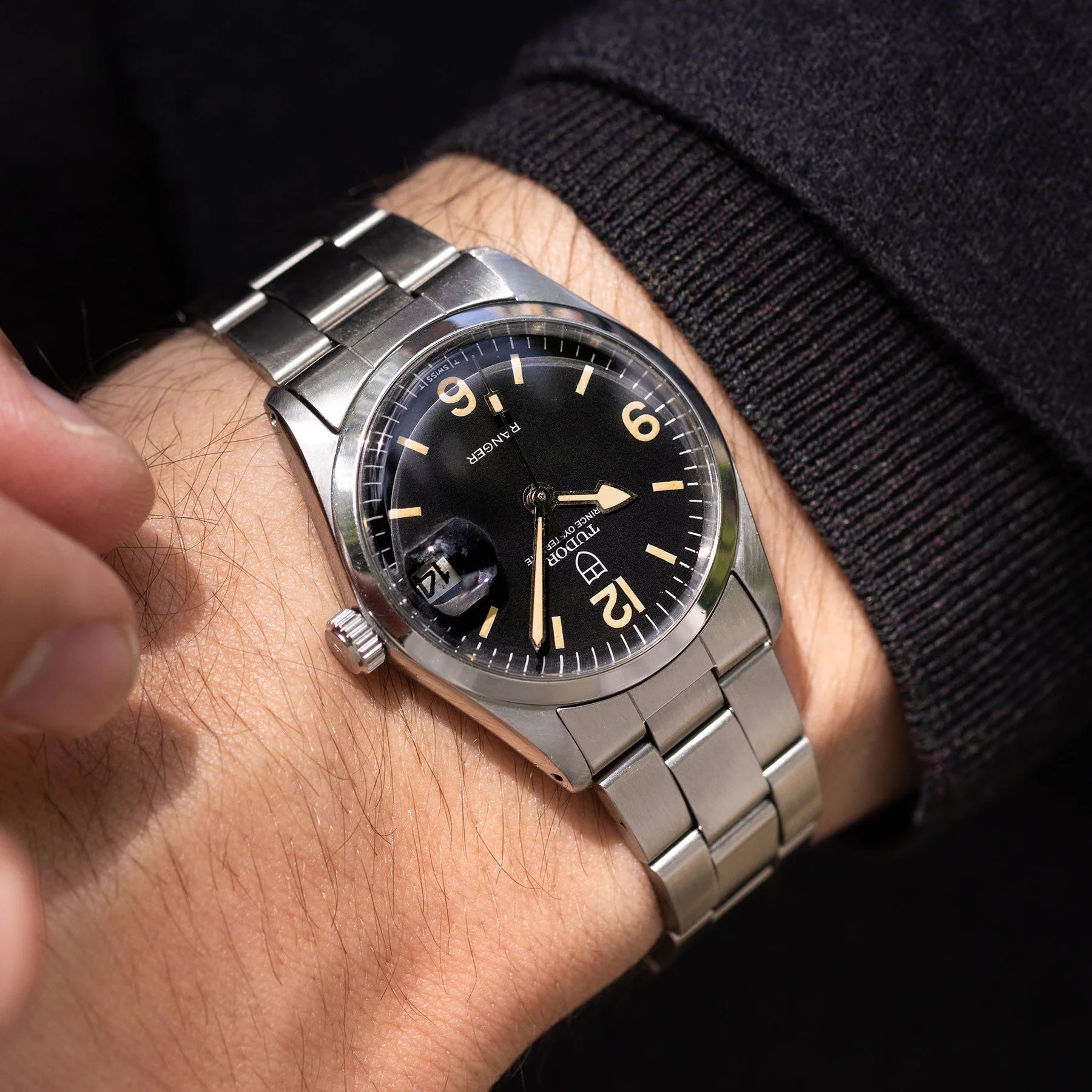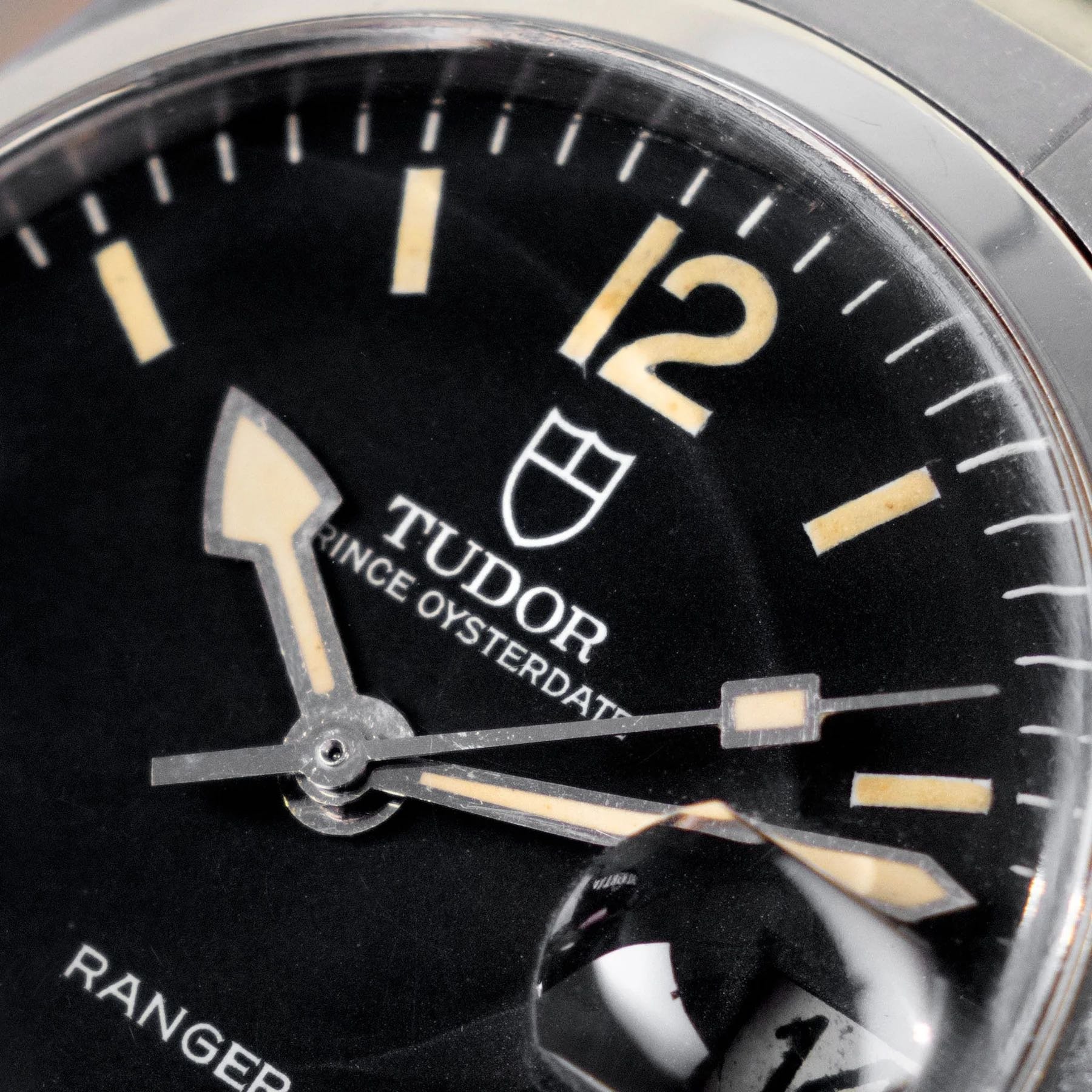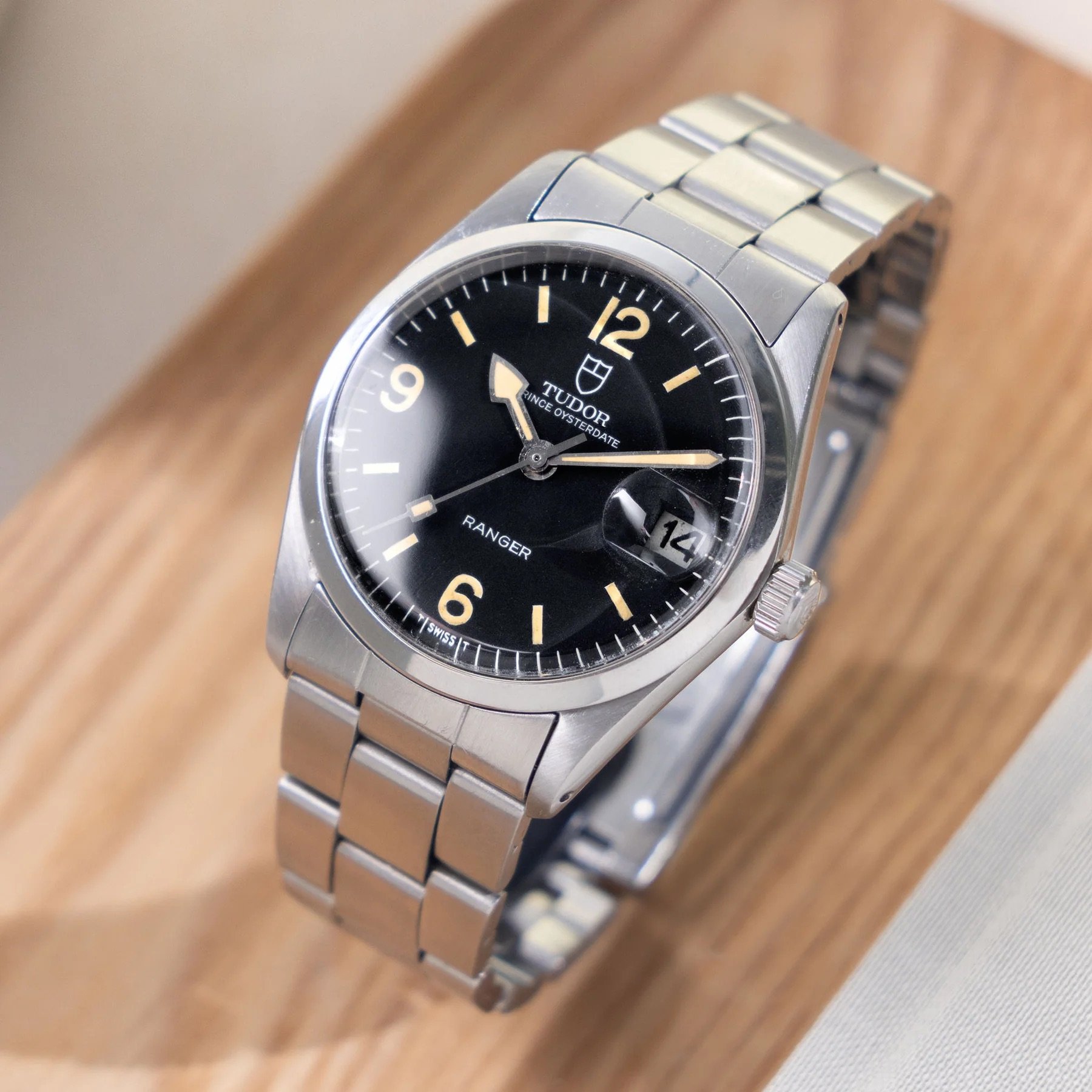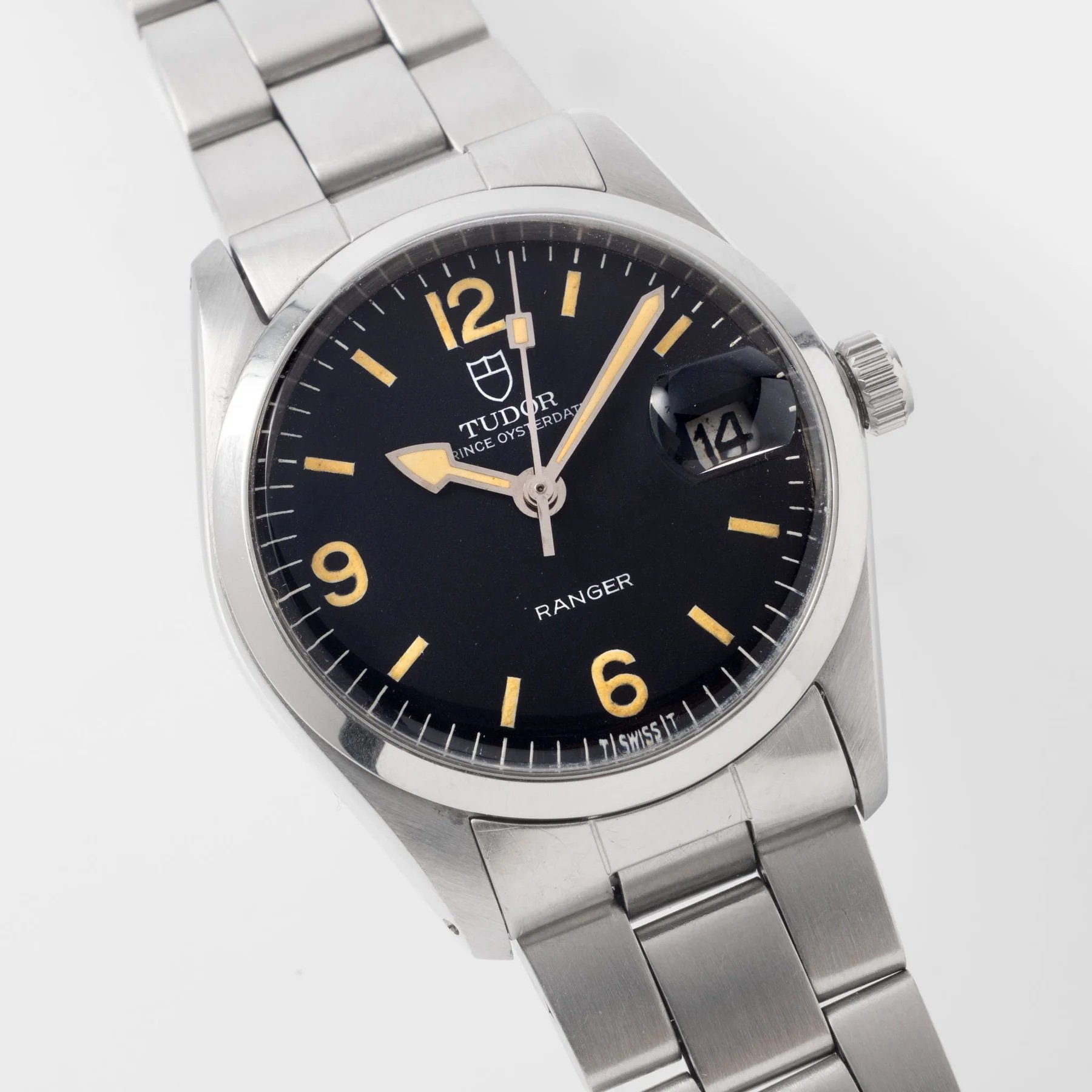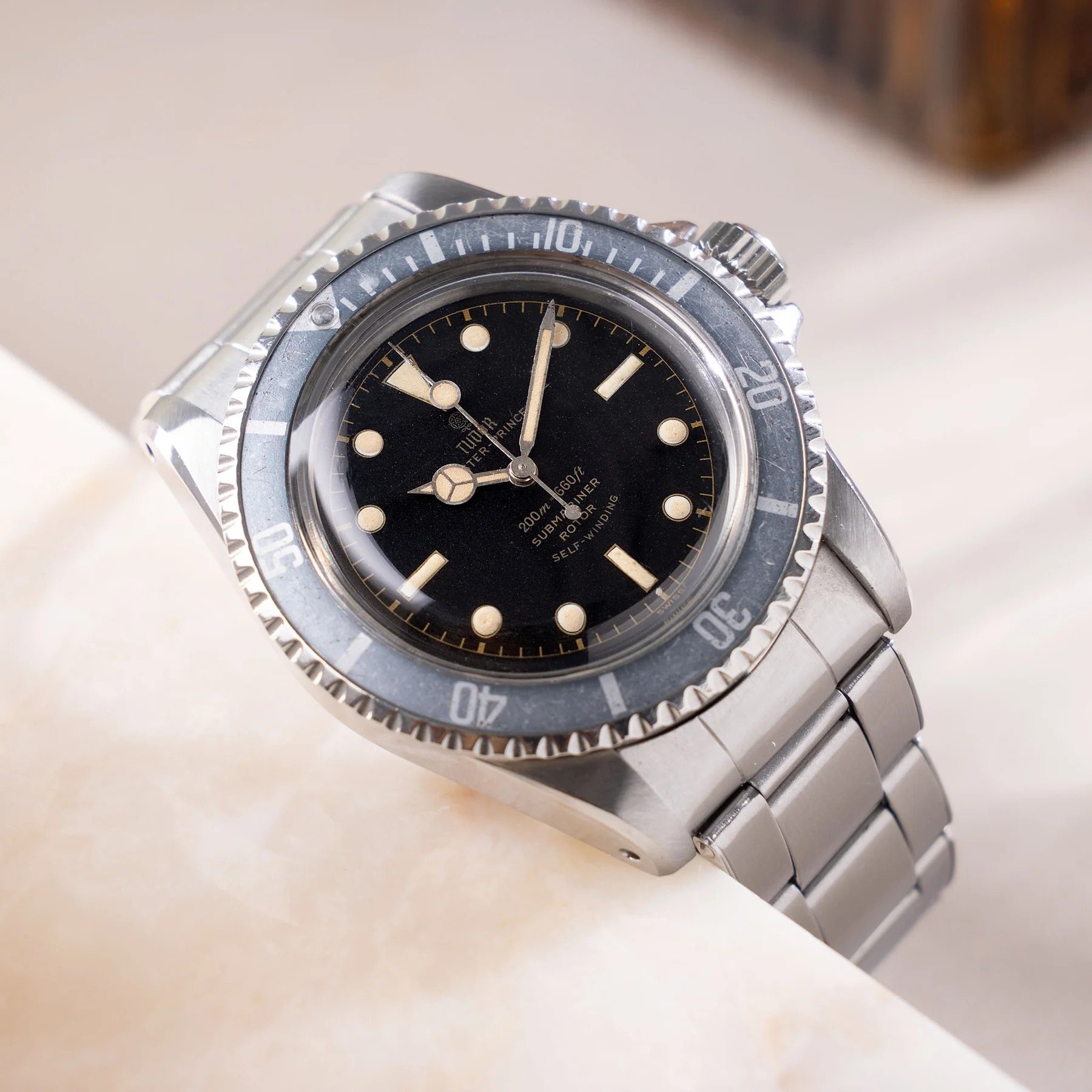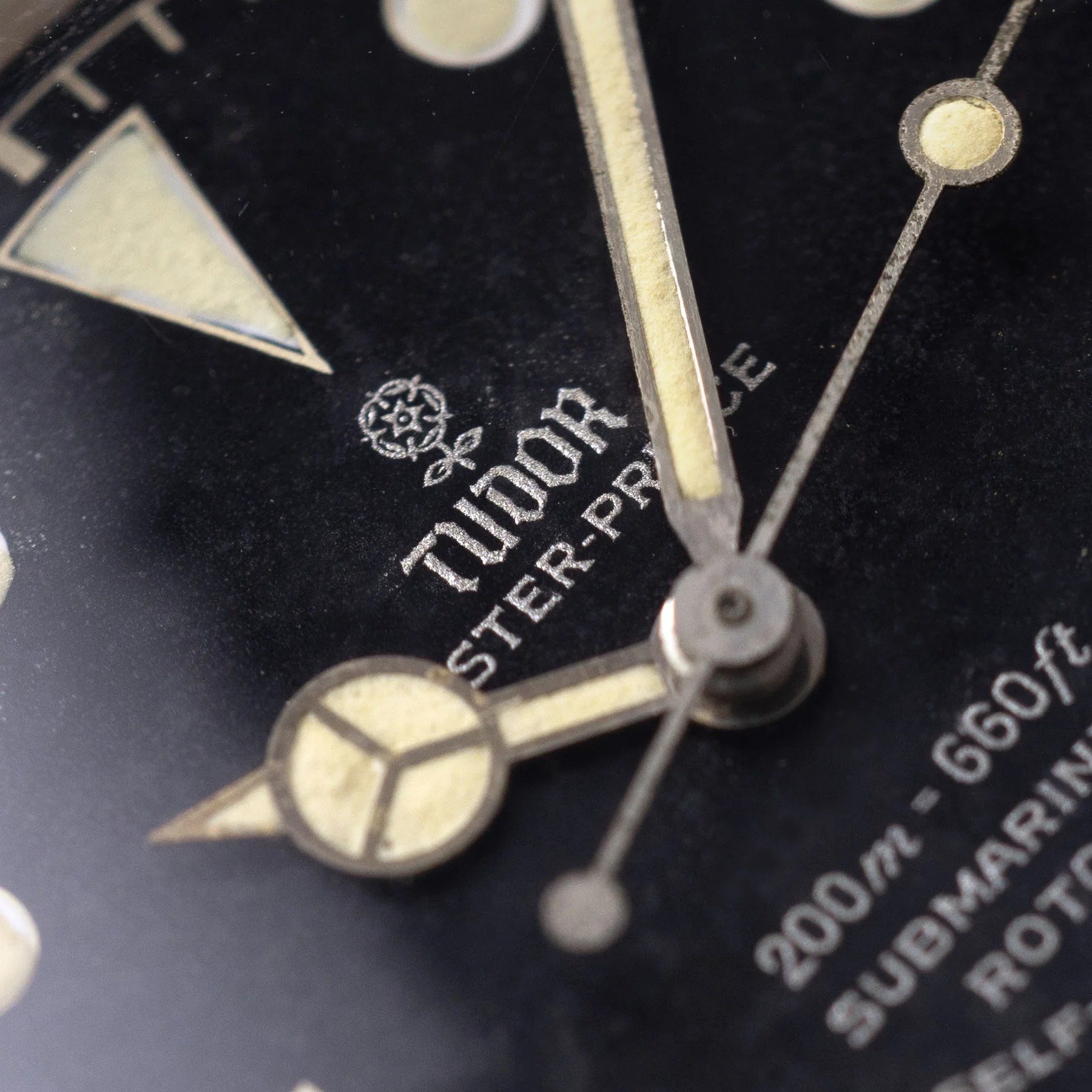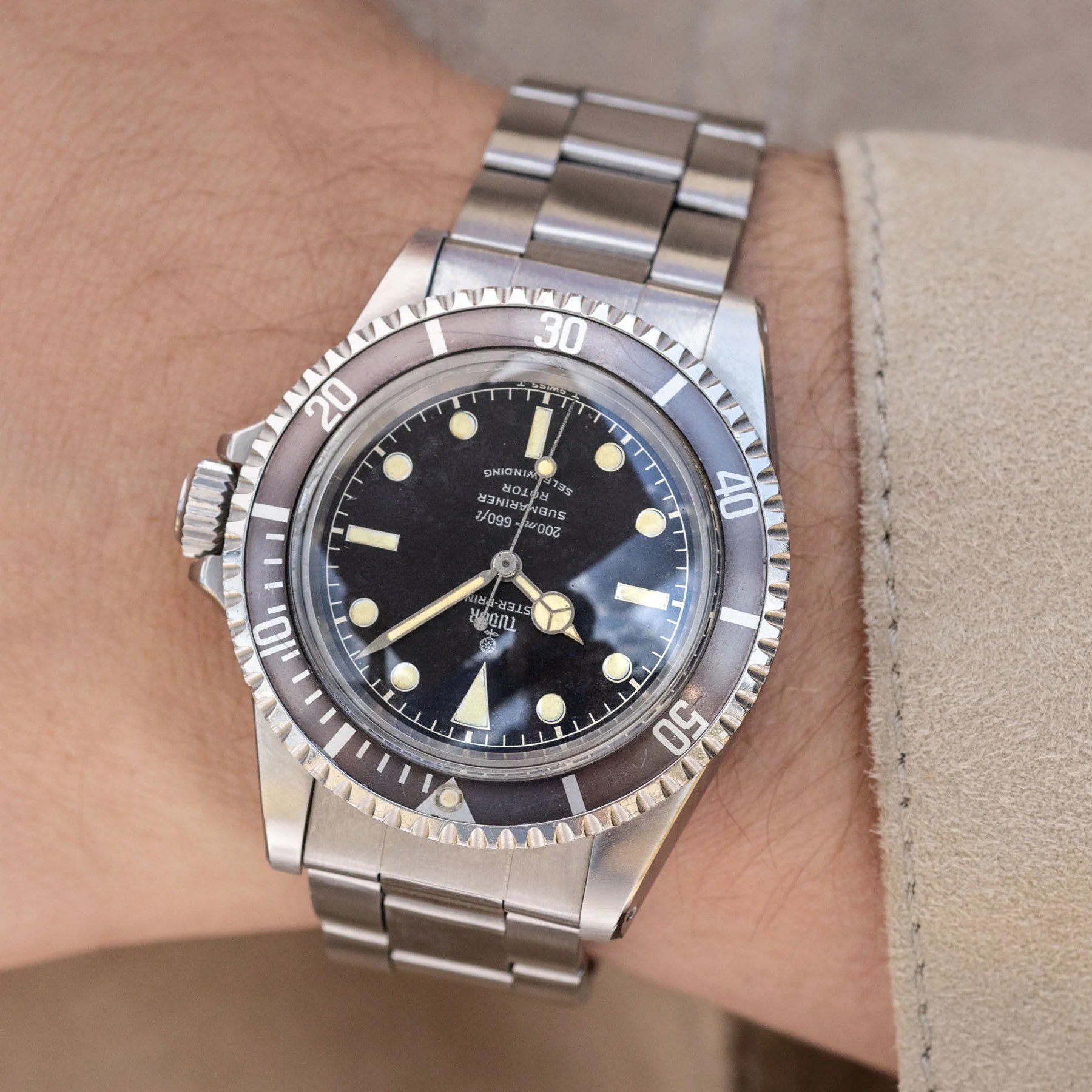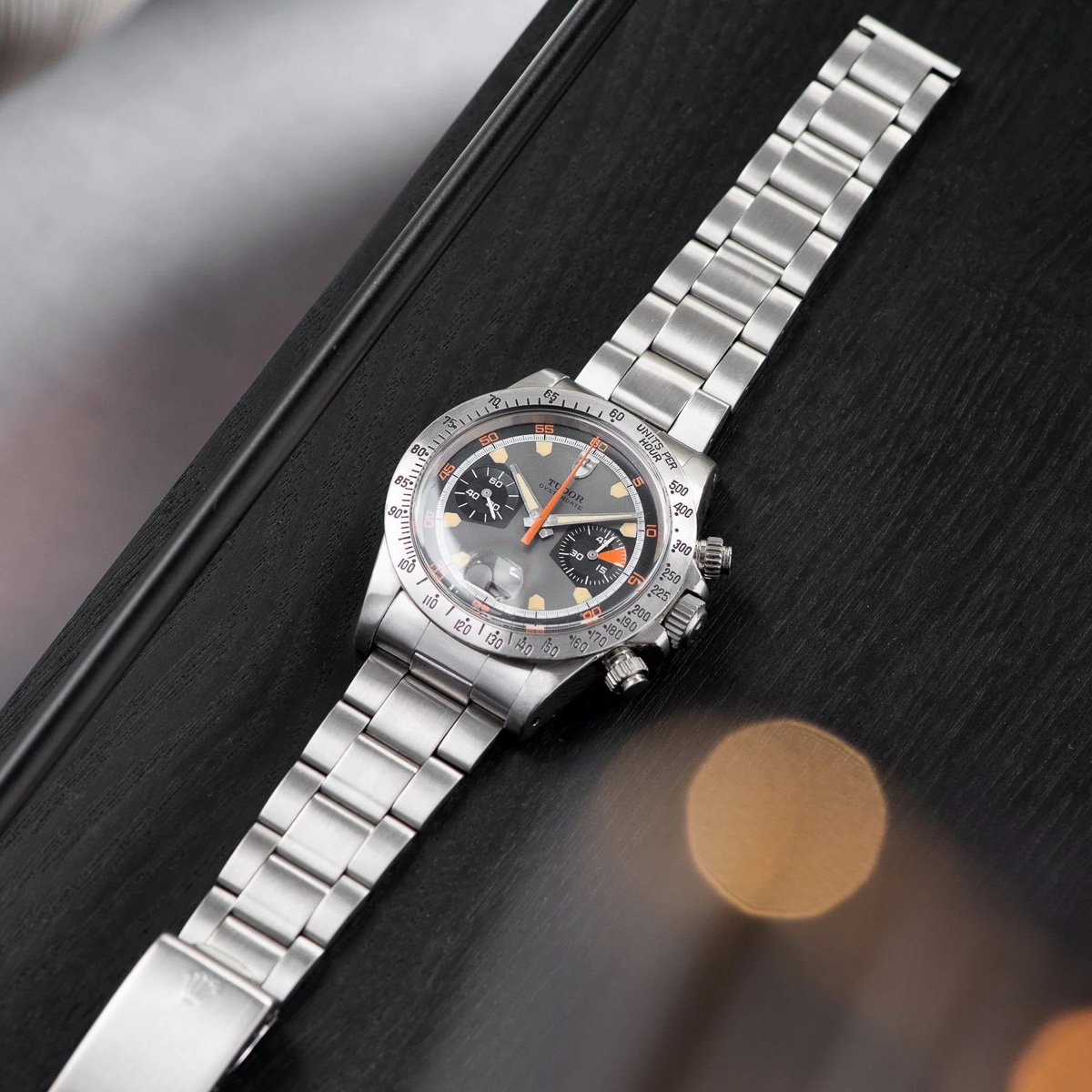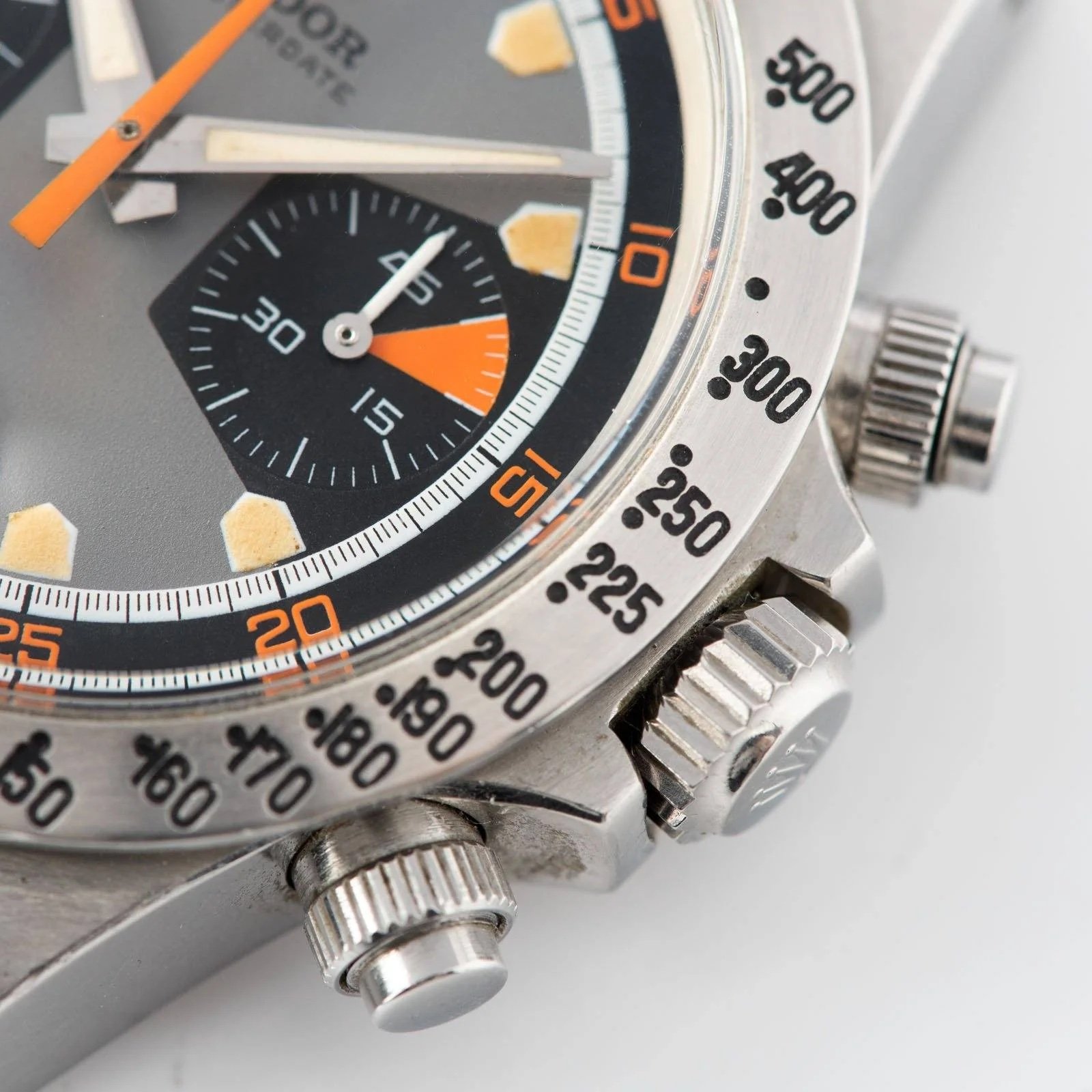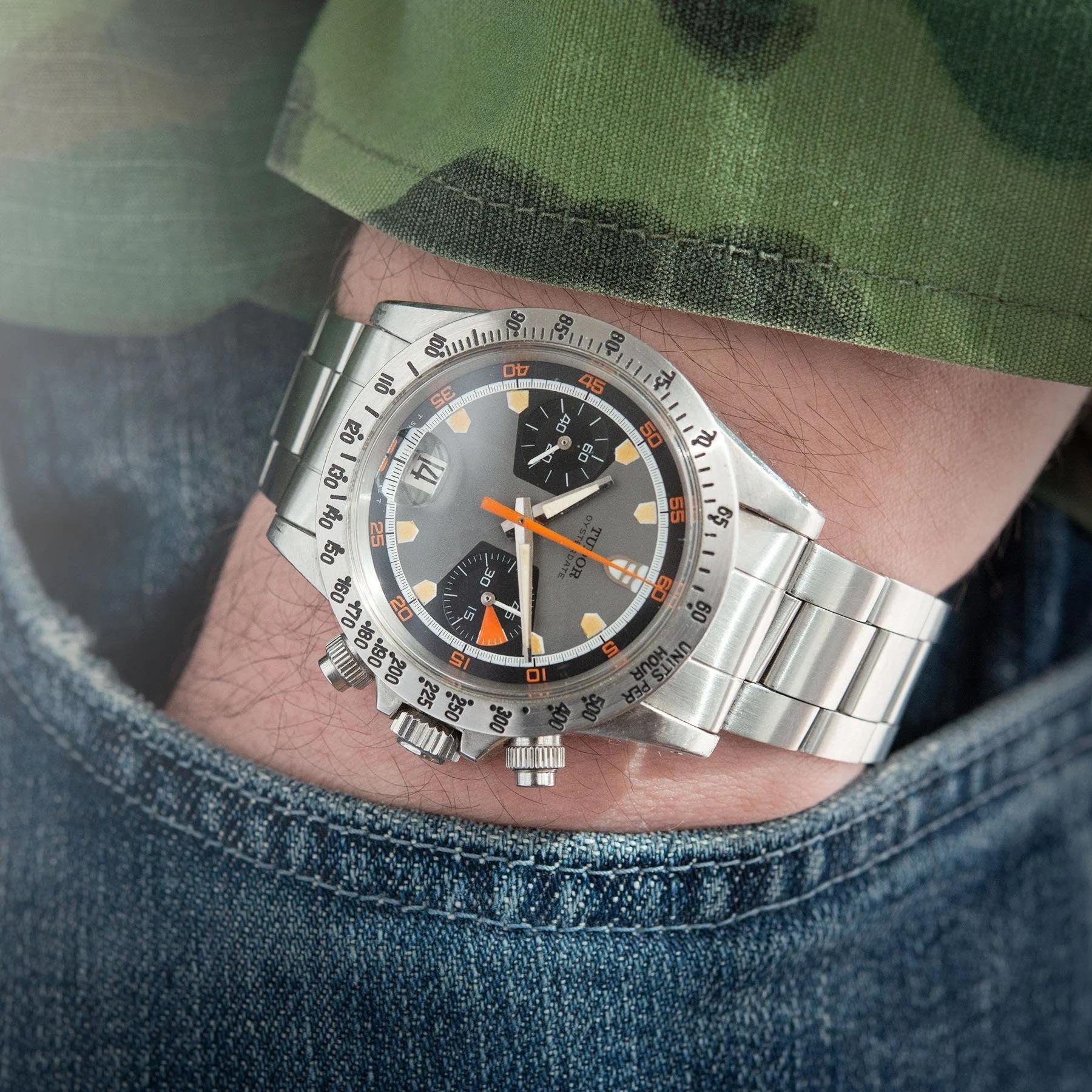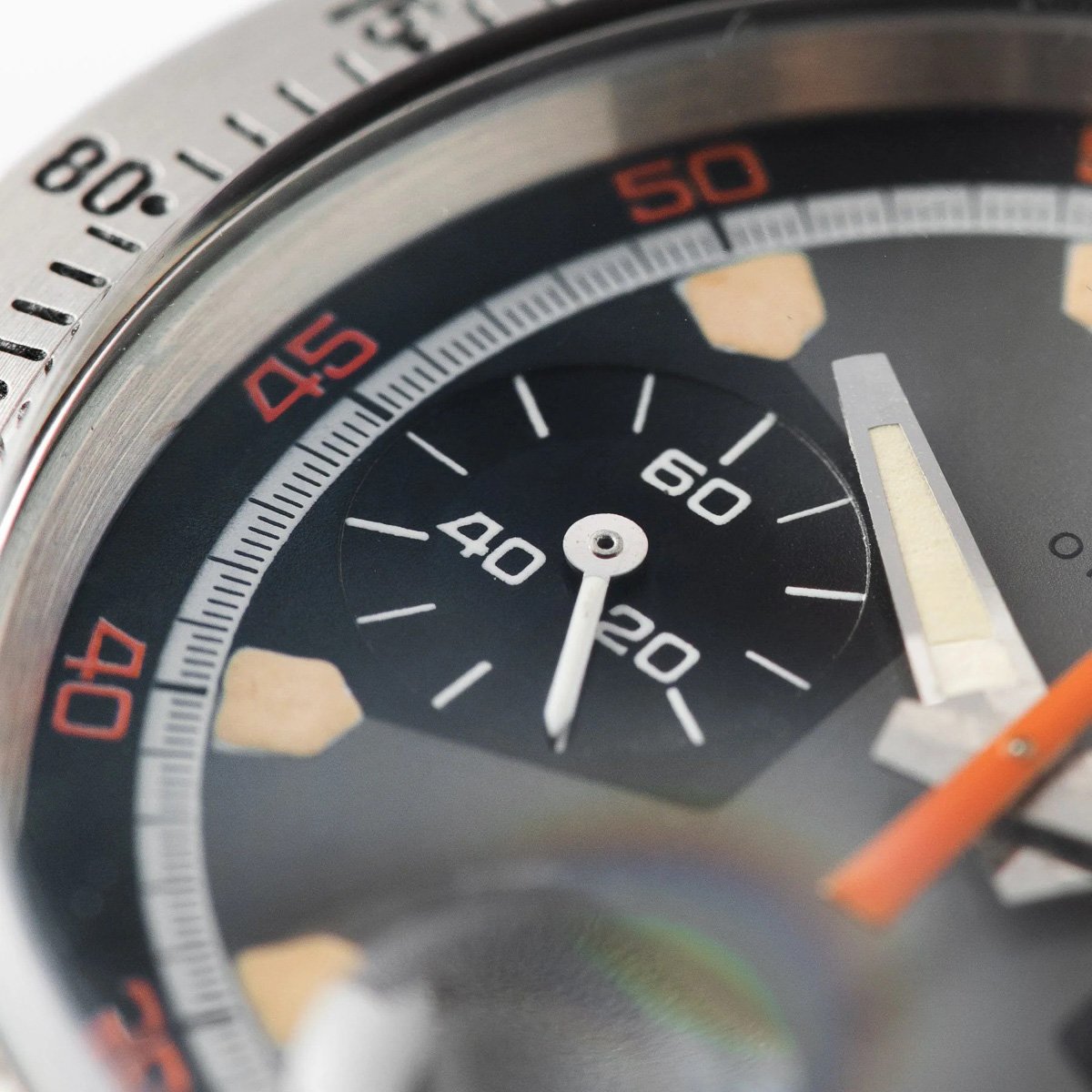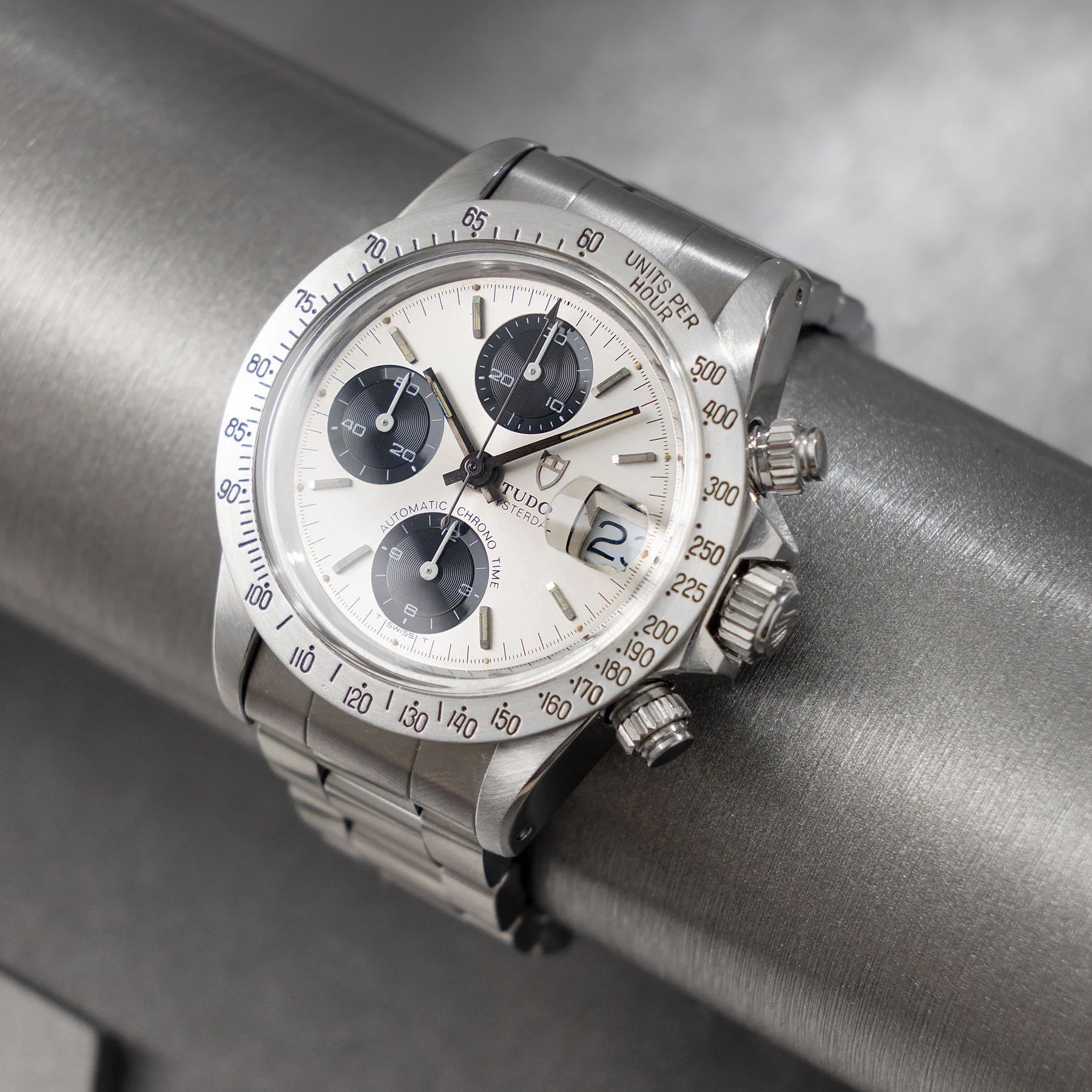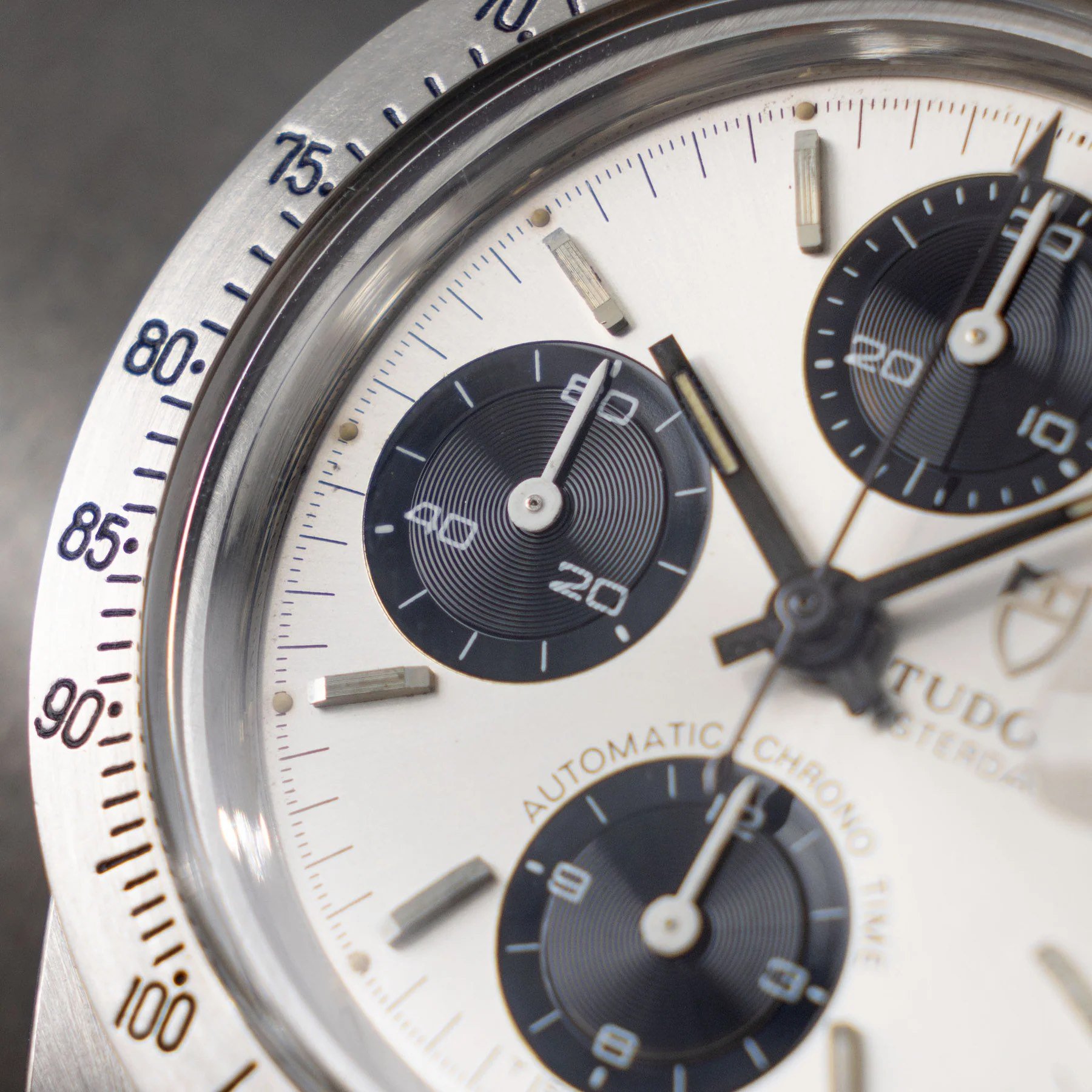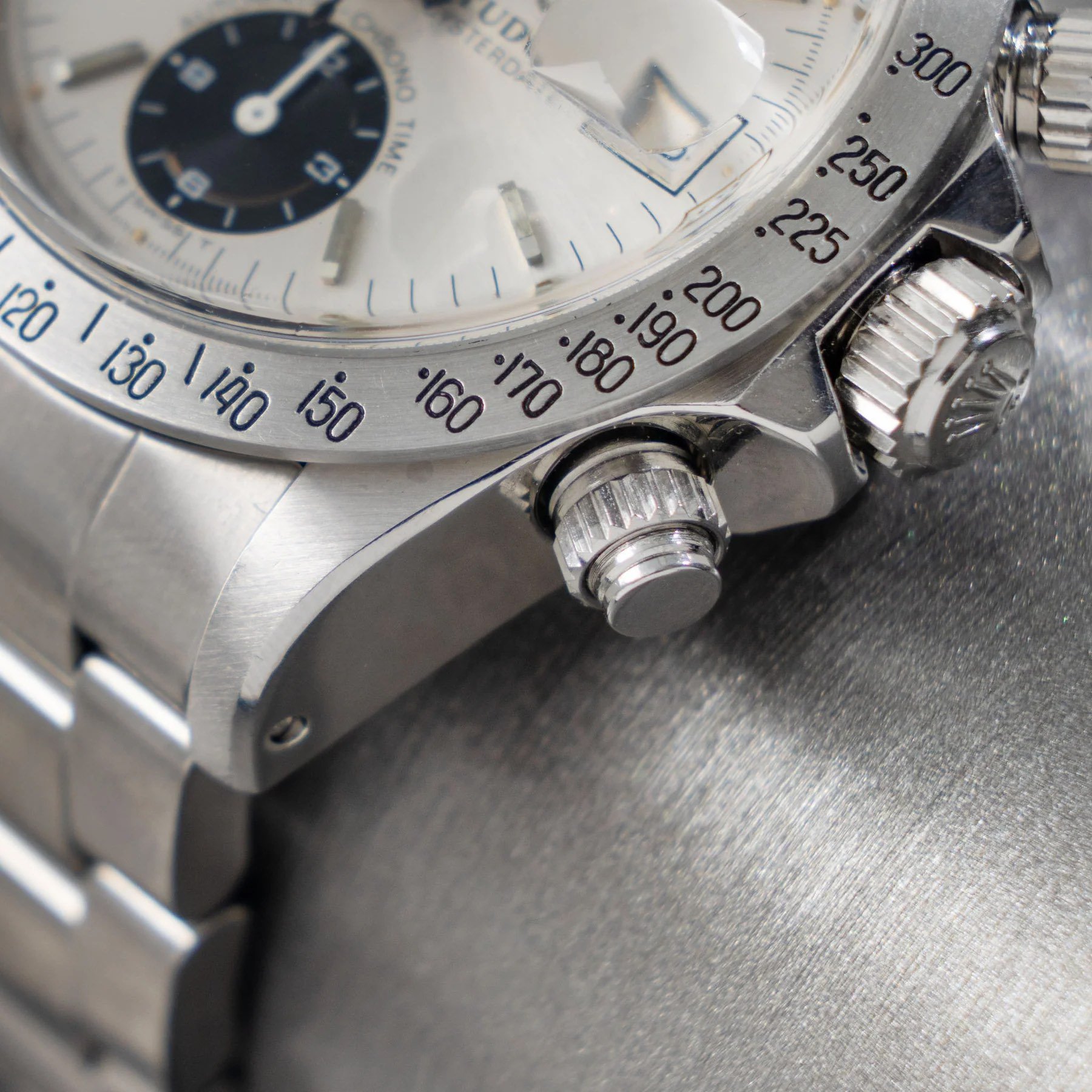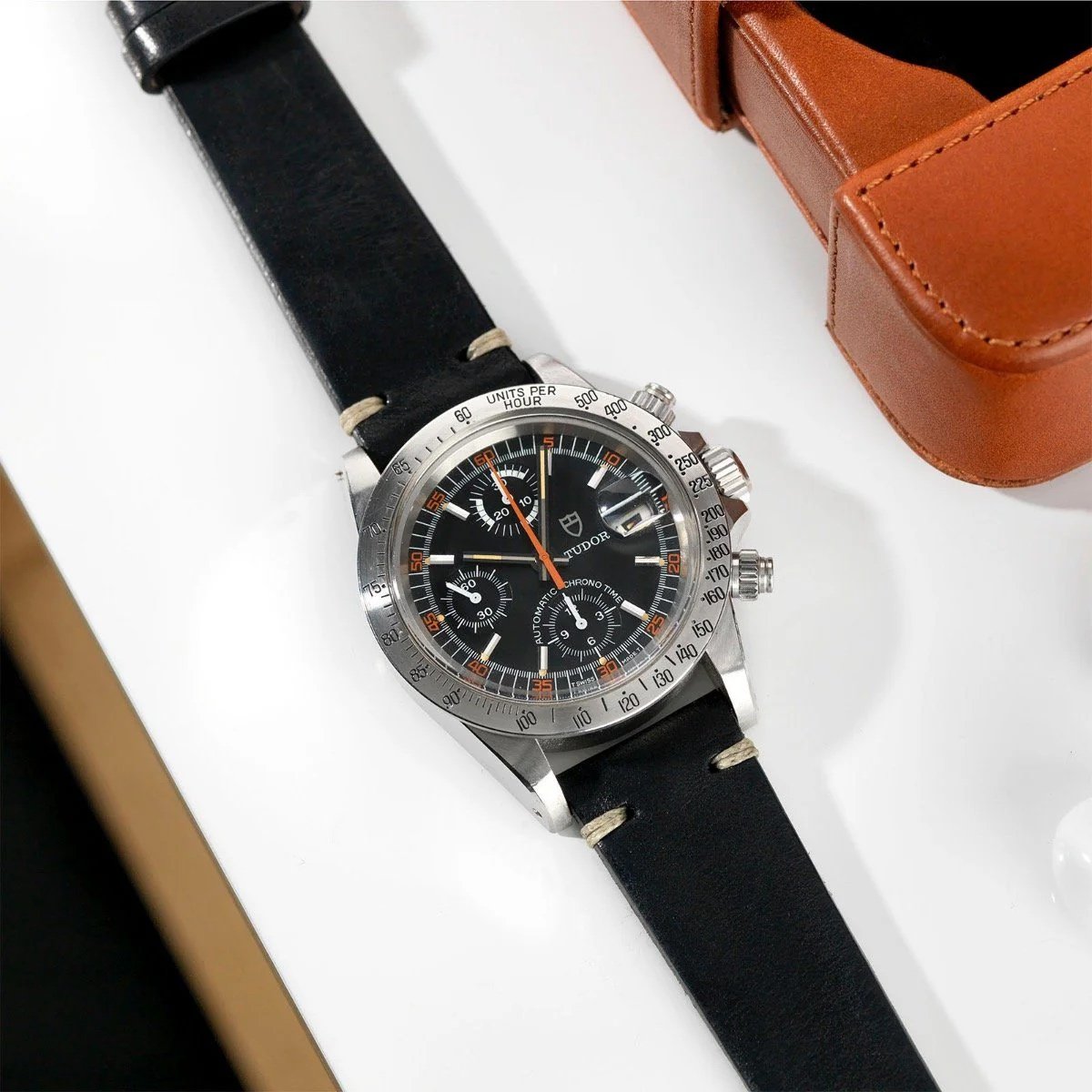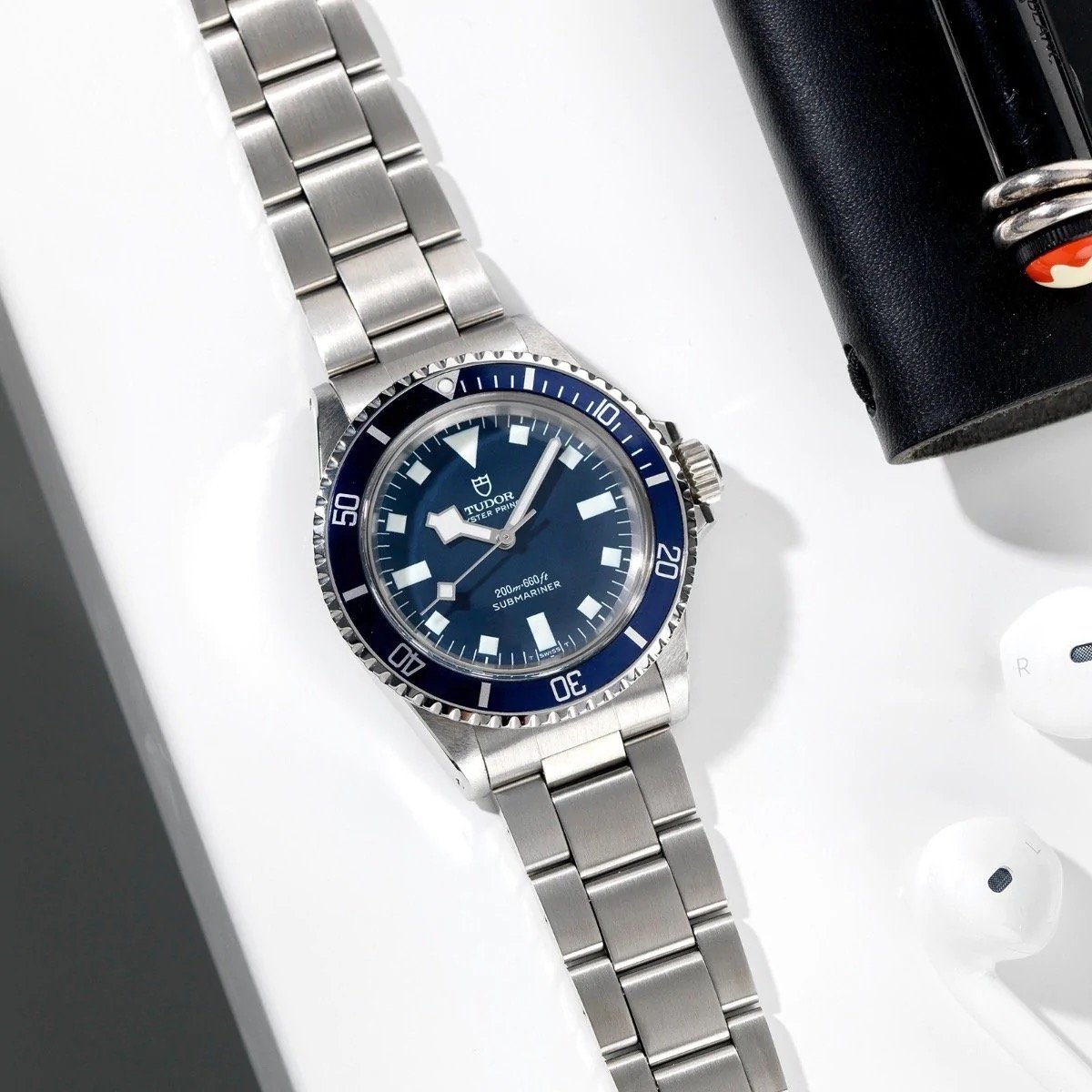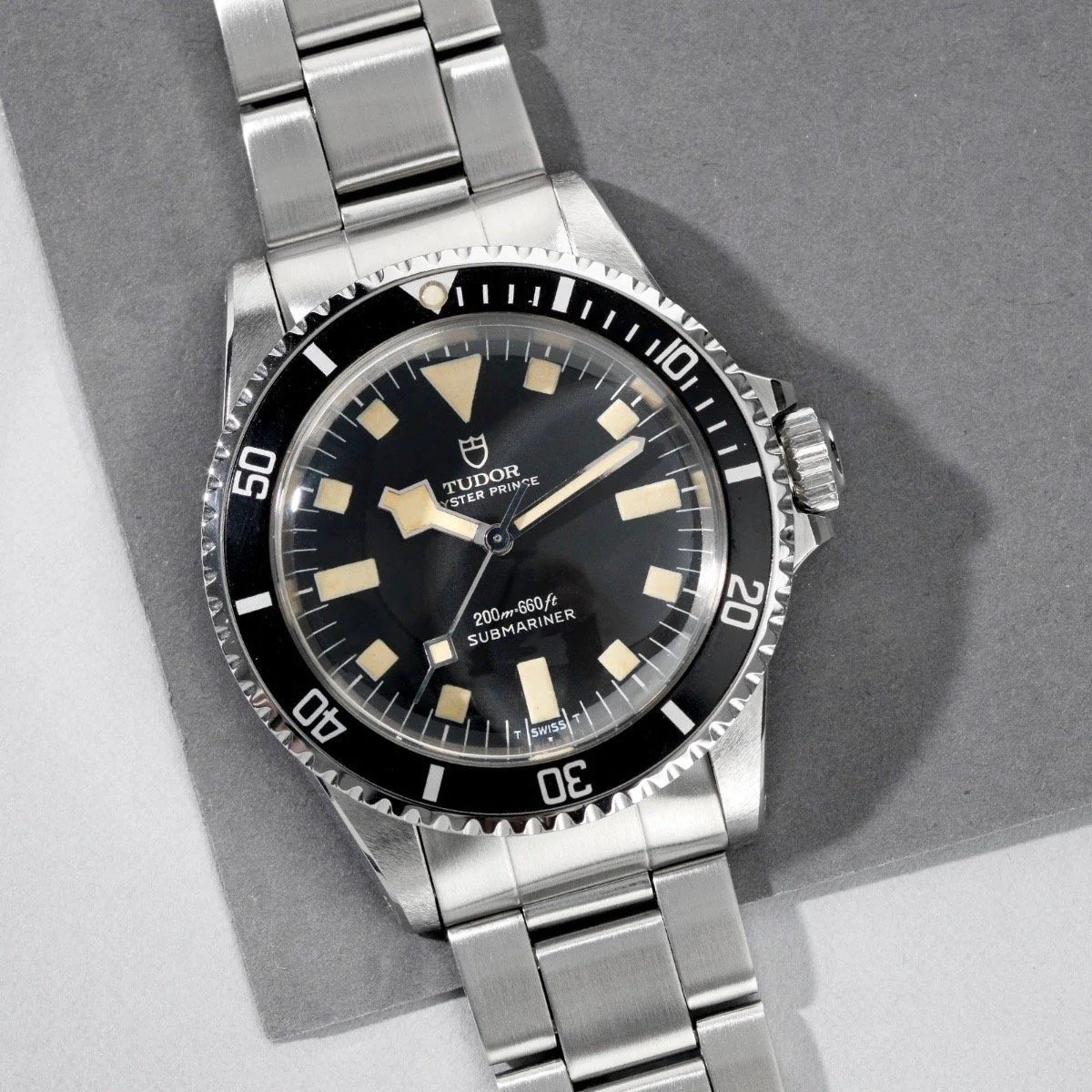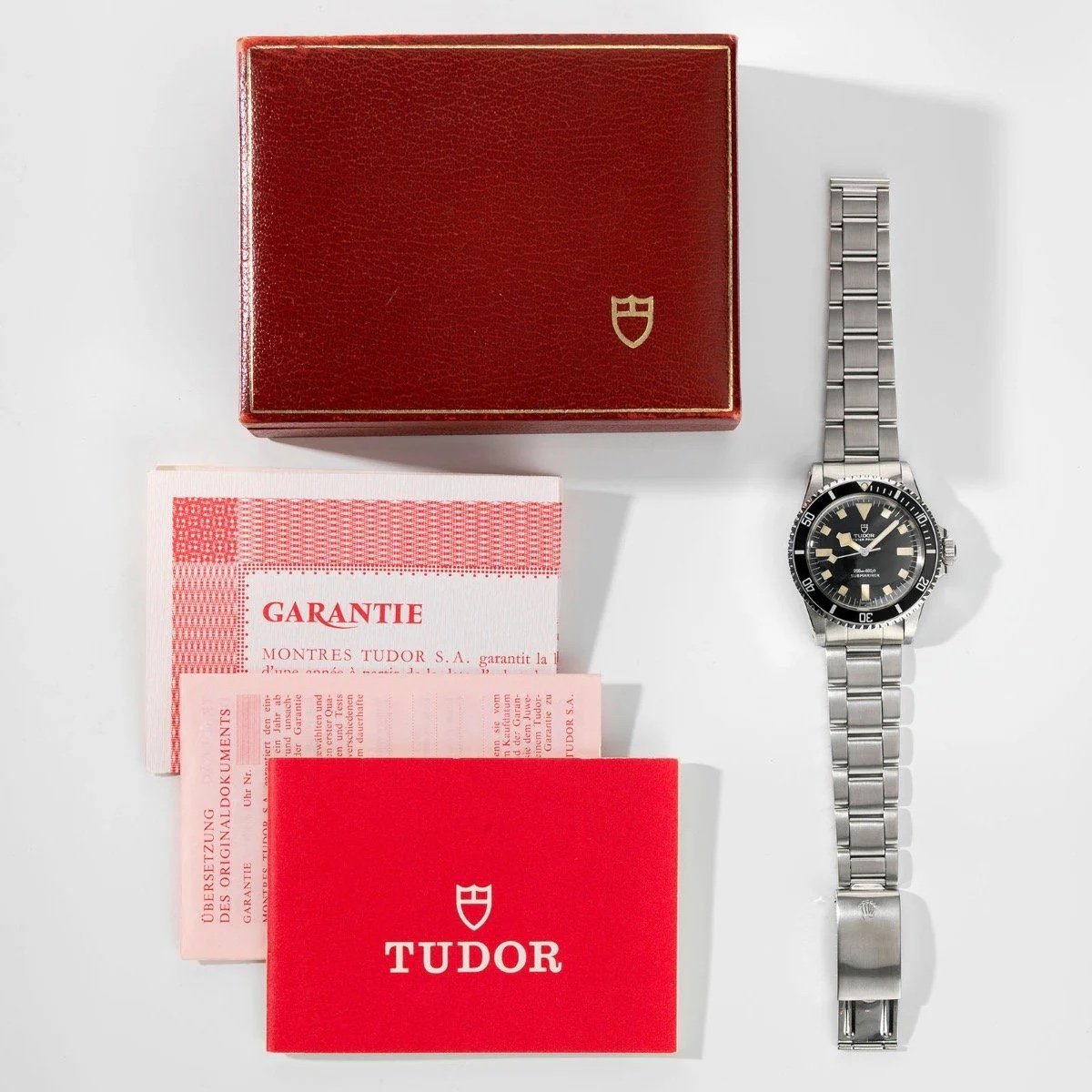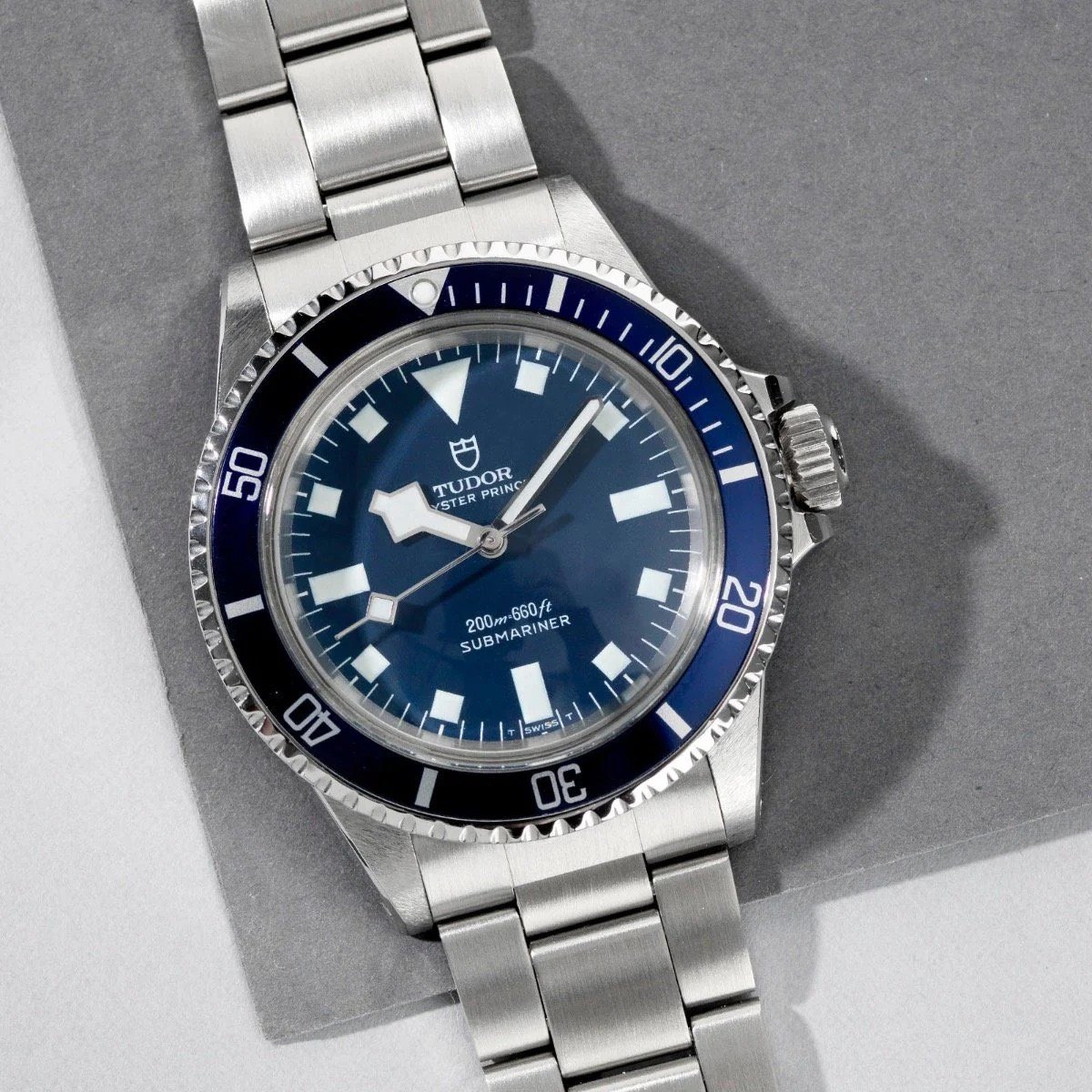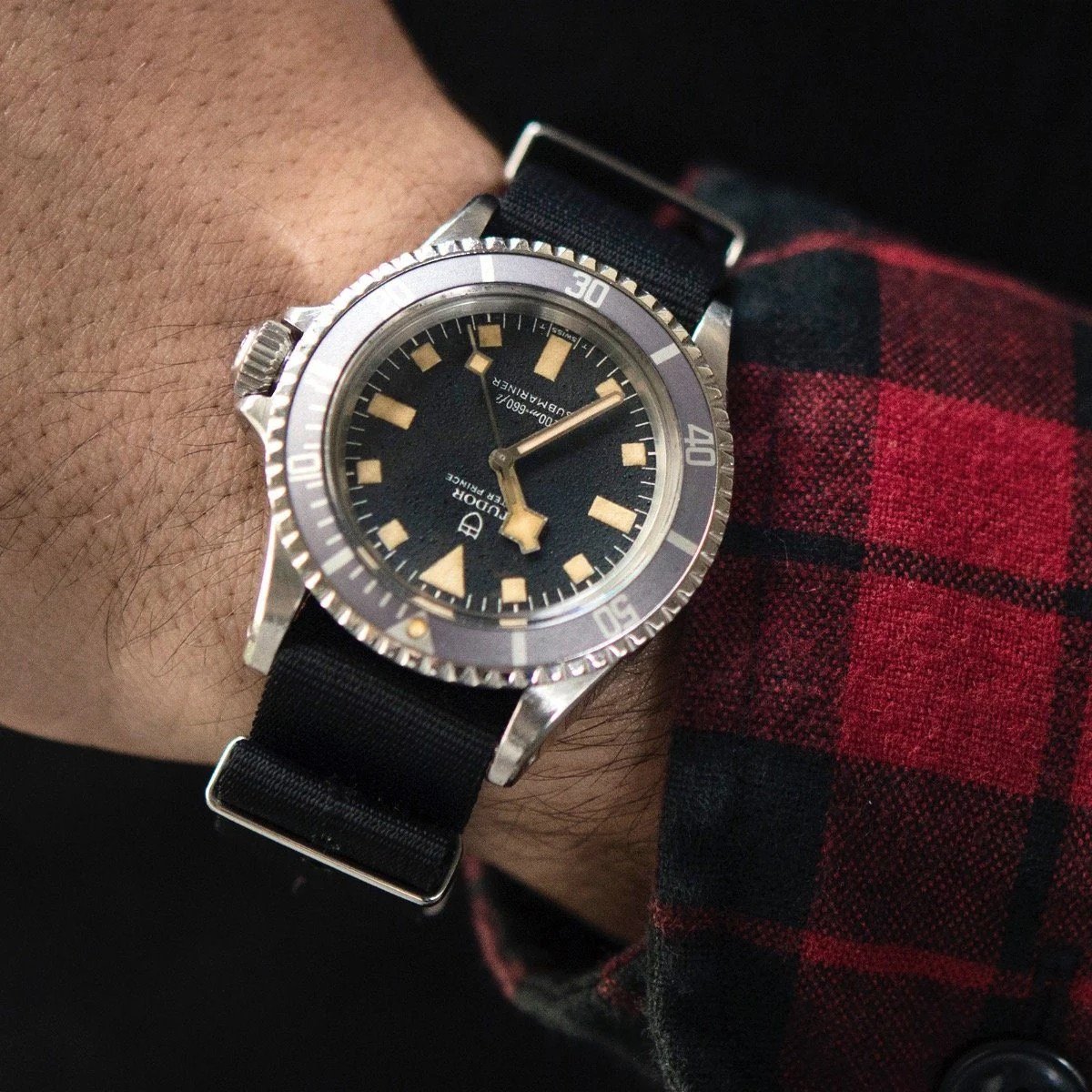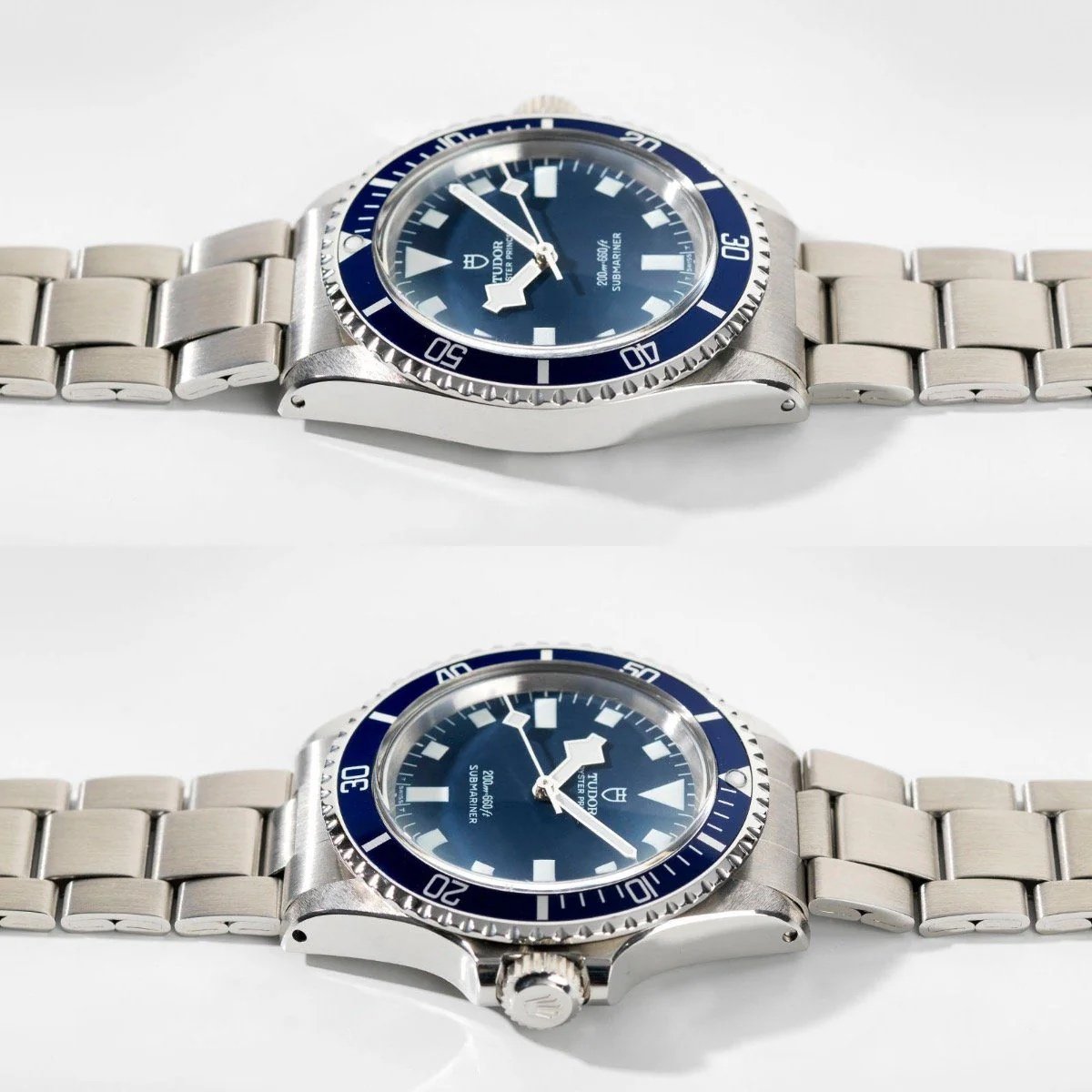Fratello’s Top 5 Vintage Tudor References
Another Friday, another list! Last week, we looked at the rarest Rolex Submariner references. This week, we have shifted our focus to Tudor. We decided to have a look at our favorite five vintage Tudor references. Most people will know the classic Submariner models, but there is plenty more to enjoy from the Tudor brand. Having said that, the Submariner played a pivotal part in the brand’s history, so do expect to see the Submariner on this list as well.
An exploration of the Tudor archives brings some amazing watches to the spotlight. While it is easy to pick just Submariners (which I have done in the past for this series), plenty of other classic Tudor watches could be great vintage additions to your collection. In this list, we have picked a mix of vintage Tudors that could even be a fantastic collection in and of themselves. So, without further ado, let’s check them out in random order.
Tudor Prince Oysterdate Ranger ref. 7966
One of the most iconic vintage watches that Tudor created is the Ranger. However, the vintage Rangers go by a longer name. As most of you know, Tudor used different designations for its models to indicate the characteristics of their movements. “Oyster” indicates a manual-winding time-only movement, while “Oyster Prince” hints at an automatic time-only caliber. Finally, “Prince Oysterdate” signifies an automatic movement with a date display. For our first pick, we selected the Tudor Prince Oysterdate Ranger ref. 7966. This Ranger model featured an automatic movement and date window with the famous Cyclops.
The tricky thing about vintage Tudor Rangers is that they have the same reference numbers as the regular Datejust-esque Tudor models. This is because the numbers refer to the case, so you will also find those if you start looking for this reference. The Ranger was available as a time-only model with the reference number 7965 and this date version with reference 7966. Logically, the higher reference number 7995 (time only) was the successor to the 7965. Weirdly enough, though, the Ranger 7996 (time and date) was produced earlier than the 7966. It’s pretty confusing, but as we know from Rolex and Tudor, reference numbers do not always indicate their chronological order.
Not that hard to find…but expensive
The Ranger ref. 7966 was produced between 1966 and 1969, but the ref. 7996 is harder to find due to a shorter production run. Therefore, you’re more likely to find a great example of the ref. 7966 because those models are more widely available. The watch has a 34mm stainless steel case with a modest 41mm lug-to-lug. The case is nice and slim, and it sits well on the wrist. It also looks amazing on the vintage rivet bracelet or a leather or NATO strap. Inside the case, Tudor used the automatic ETA caliber 2462 and signed it “Tudor Auto Prince” on the rotor. This caliber operates at 18,000vph and offers 40 hours of power reserve.
The black dial has tritium numerals at 6, 9, and 12 o’clock, so it differs from the illustrious Rolex Explorer ref. 1016 that was also in production during that same period in time. On top of that, the Ranger features different hands, which makes it unmistakably a Tudor. Finding a Tudor Ranger ref. 7966 is not hard, but most examples have become rather expensive. Expect asking prices to start at just under €8K and rise to around €12K for one in great condition. Right now, the Ranger ref. 7966 is more affordable than an Explorer ref. 1016, but it’s not far behind. It shows that some popular vintage Tudor models have increased significantly in value.
Tudor Oyster Prince Submariner ref. 7928
We could have picked multiple Submariner references from the Tudor archives as they have been elemental in the brand’s success. Ultimately, we decided to go with two references, the first being the Tudor Oyster Prince Submariner ref. 7928. It’s the first Submariner from Tudor with crown guards, making it the Tudor equivalent to the Rolex Submariner ref. 5512. The ref. 7928 debuted in 1959 and stayed in production until 1968. This makes it the Tudor Submariner with the longest production run.
Collectors have defined four case versions with different crown guards. The Mk1 case has “Square” crown guards, the Mk2 case has “Eagle Beak” pointed crown guards, the Mk3 case has pointed crown guards, and the Mk4 case has rounded crown guards. In addition to the different crown guards, Tudor produced multiple dial variations. The early models have classic gilt dials with closed minute tracks that collectors love. Later on, Tudor switched to matte black dials with white markers and text. The so-called “Exclamation Dot” and “Underline” dials are other interesting variations. These refer to their less radioactive luminous material than the radium used for earlier dials.
The classic Submariner look
Inside the case, you will find the Tudor caliber 390. It is a modified automatic Fleurier movement that operates at 18,000vph and offers 38 hours of power reserve. This classic movement is nice certainly not as durable as the ETA movements that Tudor eventually switched to. So if you have your eyes set on a Submariner ref. 7928, make sure you know a watchmaker who can service the caliber properly. Nevertheless, I believe this is one of the best Tudor Subs. It truly captures the classic Submariner style that we see to this day. Finding one is not that hard, but don’t expect it to be cheap. The asking prices start at roughly €7K but easily move up to €25K or more for one in good condition or a version with a ghost bezel.
Tudor Oysterdate “Homeplate” ref. 7032
Our next pick is part of the first series of Tudor chronographs. In 1970, the brand launched a new series of chronographs with colorful dials that have become fan favorites. The watches took a visual step away from the Rolex design language with the dials, which are very different from the dials found in the famous Daytona. The so-called “Homeplate” models feature sub-dials at 3 and 9 o’clock and have a date window with the famous Cyclops date magnifier at 6 o’clock.
Tudor produced three different variations of these chronographs. The first is the ref. 7031 that came with a black plastic bezel insert with a tachymeter scale. Next is the ref. 7032 we picked, which has a fixed stainless steel bezel with engraved numerals executed in black. The third model is the ref. 7033, which never made it past the prototype stages. It had a bidirectional bezel with a black insert featuring a 12-hour scale.
The first vintage Tudor chronographs are really expensive
The eye-catching dial and steel bezel of this model make it a standout. If we zoom in on the dial, we see that it features a combination of black, gray, and orange parts that give the watch character. The large hour markers shaped like home base on a baseball field give the series its nickname. They also add a nice touch of extra color thanks to the nicely patinated lume. Inside the case, you will find the manual-winding Valjoux 7734 chronograph movement.
The caliber operated at 18,000vph and provided a 45-hour power reserve. A quick check of asking prices reveals that they start at roughly €25K and rise to €33K, with some sellers even asking roughly triple that. It seems a bit crazy, but the steep prices hint at the popularity of these classic Tudor chronographs.
Tudor Oysterdate “Big Block” ref. 94300
Our fourth pick is another chronograph reference. With the Tudor Oysterdate “Big Block'” ref. 94300, we jump from the first Tudor chronographs overall to the first automatic ones. The “Big Block” chronograph series was introduced in 1976 and can be found in three variations. Due to the added rotor, these models became thicker than the previous Oysterdate chronographs. The thicker case led to the series getting its “Big Block” nickname. Watch fans will immediately know that it means we’re switching to watches with the famous Valjoux 7750 layout. It features three registers at 6, 9, and 12 o’clock and a date window at 3 o’clock.
As explained in my overview article on Tudor chronographs, the brand released three references with different bezels. The first is the ref. 94200 with black or blue tachymeter scales. The second was the ref. 94201, featuring a bidirectional bezel with a 12-hour scale. Lastly, there was the ref. 94300 with a stainless steel bezel featuring a tachymeter scale. But that’s not where the differences end because several distinct dial variations exist. It’s easiest to divide them into two groups. The first group consists of the “Monte Carlo” dials, also known as “Exotic” dials, which continue the colorful designs of previous generations. The second group had more subdued dials with traditional colorways, but they were no less handsome.
Familiar looks that are slightly different
We picked the models with “regular” dials because they offer fans a chance to buy a classic Tudor chronograph for a decent price. Tudor released two versions of these dials — a silver one with black registers and a black version with silver registers. The new handset with an “arrow” central chronograph hand was a nice detail that takes after the manual-winding Daytona models. Overall, these watches look a lot like the Daytona of that era. Is that a bad thing? Of course, that’s up to you.
We like these watches a lot, and they carry much friendlier price tags than the colorful references. Expect prices to start at roughly €5.5K and increase to €12K. The “Monte Carlo” versions tend to start even higher than that. For these more colorful variants, expect prices ranging from roughly €14K to €18K. For me, not only are the prices of the regular-dial version more attractive, but the classic look is also hard to beat.
Tudor Oyster Prince Submariner ref. 7016
We’ll finish this list with the Submariner reference that initiated the typical Tudor style we have come to know and many of us love. The Tudor Oyster Prince Submariner ref. 7016 debuted in 1969, and with it came the famous dial with the square hour markers and the snowflake hands. The design resulted from the Marine Nationale’s divers providing Tudor with a list of practical points to be optimized. The French Navy divers created the list after having used the Submariner ref. 7928 for their dives. The main thing that they requested was better readability underwater.
Therefore, the Tudor designers gave the Submariner larger luminescent hands and square hour markers. This new aesthetic offered a practical solution to the divers’ challenges and gave birth to the iconic “true Tudor style.” But it took some time before these new dials became available to the public. In 1969, the brand introduced the time-only ref. 7016 and the date-equipped ref. 7021, which stayed in production until 1975. Not all of these watches feature the characteristic dial design, though.
My favorite Tudor Submariner of all
I wrote an article about the Submariner ref. 7016 as it is my favorite Tudor Sub. In it, I explained that the Mk1 versions have the regular Submariner dial with round indexes and Mercedes hands. The Mk2 versions introduced the famous dial and snowflake hands. Additionally, Tudor updated the case with rounded crown guards. This generation of the Tudor Submariner also was the first to use ETA movements.
The time-only ref. 7016 is powered by the caliber 2483. This automatic movement operates at 18,000vph, has 25 jewels, and provided 42 hours of power reserve when it was released. This brilliant Tudor Submariner is not just my favorite. It is also a popular reference among Tudor collectors, which is why good examples cost serious money. Expect prices to start at roughly €7K for a Mk1 version, whereas the Mk2 versions start at €9K. Prices for both move up to roughly €20K for one in great condition. Especially if you buy a Mk2 version, you will score an important part of Tudor’s history.
Final thoughts on our top five vintage Tudor references
As you will understand, this is just a list of five watches; we could have easily picked five more. Tudor has a serious number of cool vintage models that are worth checking out. With Tudor’s rising popularity, we have also seen a massive increase in the price of vintage Tudor watches. Unfortunately, the days of bargain Tudor Submariners are over. Interestingly, some vintage Tudor classics are even more expensive now than their Rolex counterparts.
It’s a remarkable conclusion to this article, but it won’t stop us from lusting after some of these fantastic watches. I’ve had the blue snowflake version of the Submariner ref. 7016 on my list of wants for some time, and that’s not about to change. But tell us your favorite vintage Tudor watch in the comments below, and we’ll see you next week for another list.

